HIGH-SEAS DRAMA
Lone wolf — scientists detail first recording of a single orca killing a white shark
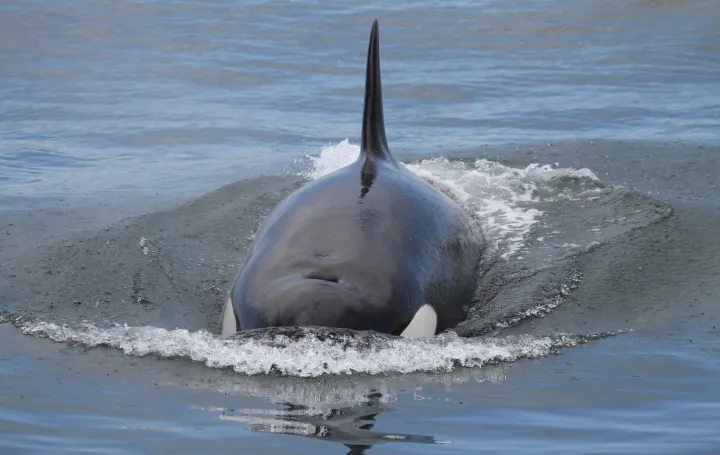
Killer whales, or orcas, have a fondness for the livers of white sharks. But all recorded incidents of such predation have involved two or more orcas. Now a lone-wolf orca has been captured on film eviscerating a white shark for its liver in Mossel Bay.
The ocean’s alpha predator has revealed another one of its secrets: It doesn’t take two orcas to tangle with a white shark.
In June 2023, researchers and tourists on separate vessels captured still and video footage of a single orca attacking and shredding a subadult white shark to pieces for its liver in Mossel Bay. Astonishingly, the incident – the first recording of a lone orca preying on a white shark – took only two minutes.
This lone wolf of the sea literally wolfed down his prey.
Details of the attack were unveiled in a research article – “Further insights into killer whales Orcinus orca preying on white sharks Carcharodon carcharias in South Africa” – published early in March 2024 in the African Journal of Marine Science.
Lead-authored by Dr. Alison Towner of the Department of Ichthyology and Fisheries Science at Rhodes University, the journal article says the speed of this high-seas drama highlights the “predator proficiency of the killer whale”.
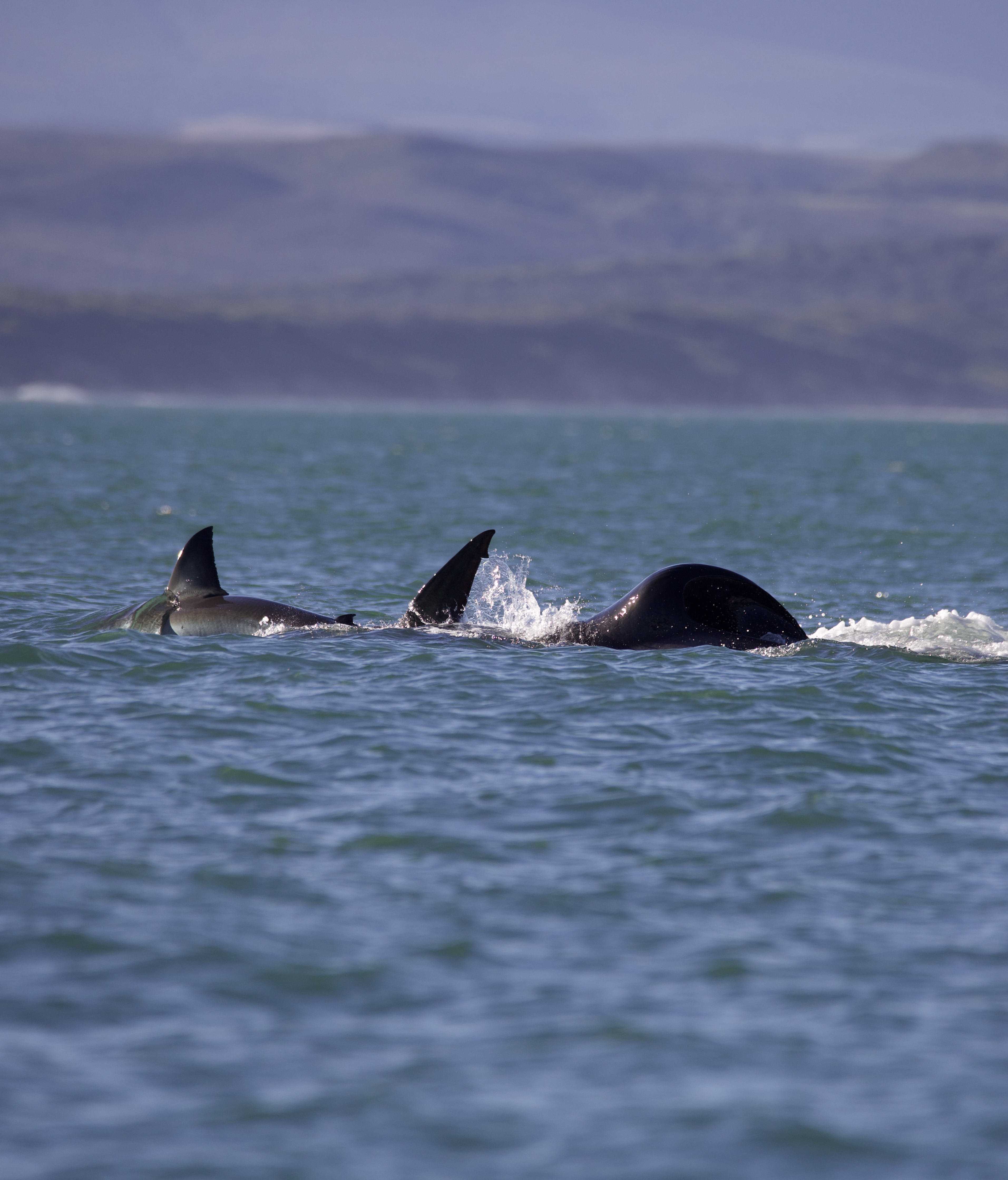
Killer whale ‘Port’ (KWP) patrolling south, and then moving north of Seal Island and remaining more than 100m from the predation event, with no further interaction with killer whale ‘Starboard’ (KWS). KWS surfaces near a juvenile white shark Carcharodon carcharias (about 2.5 m TL) and then seizes the shark’s left pectoral fin (Photo Credit Chrisitaan Stopforth, Drone Fanatics, SA)
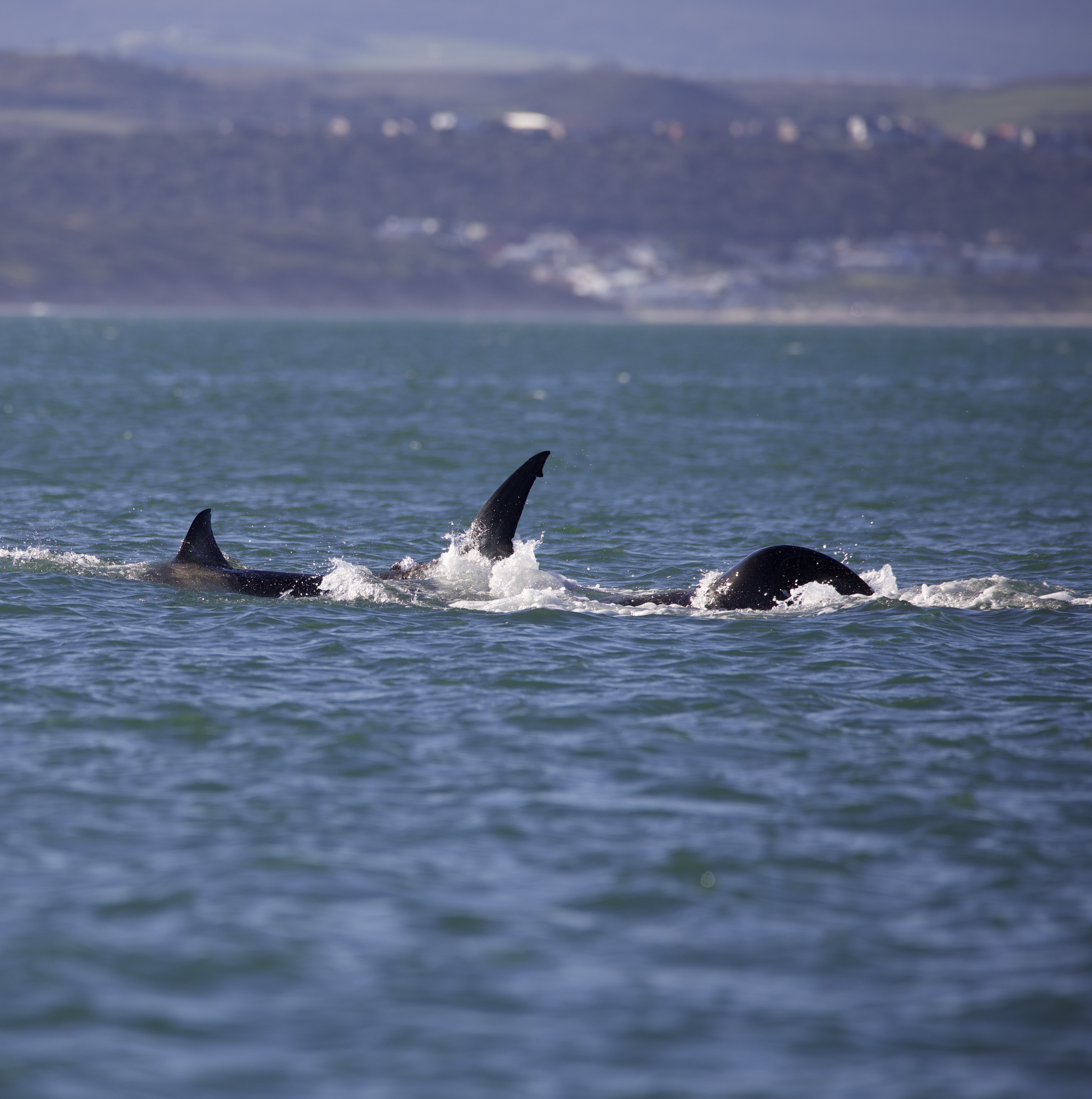
Killer whale ‘Port’ (KWP) patrolling south, and then moving north of Seal Island and remaining more than 100m from the predation event, with no further interaction with killer whale ‘Starboard’ (KWS). KWS surfaces near a juvenile white shark Carcharodon carcharias (about 2.5 m TL) and then seizes the shark’s left pectoral fin (Photo Credit Chrisitaan Stopforth, Drone Fanatics, SA)
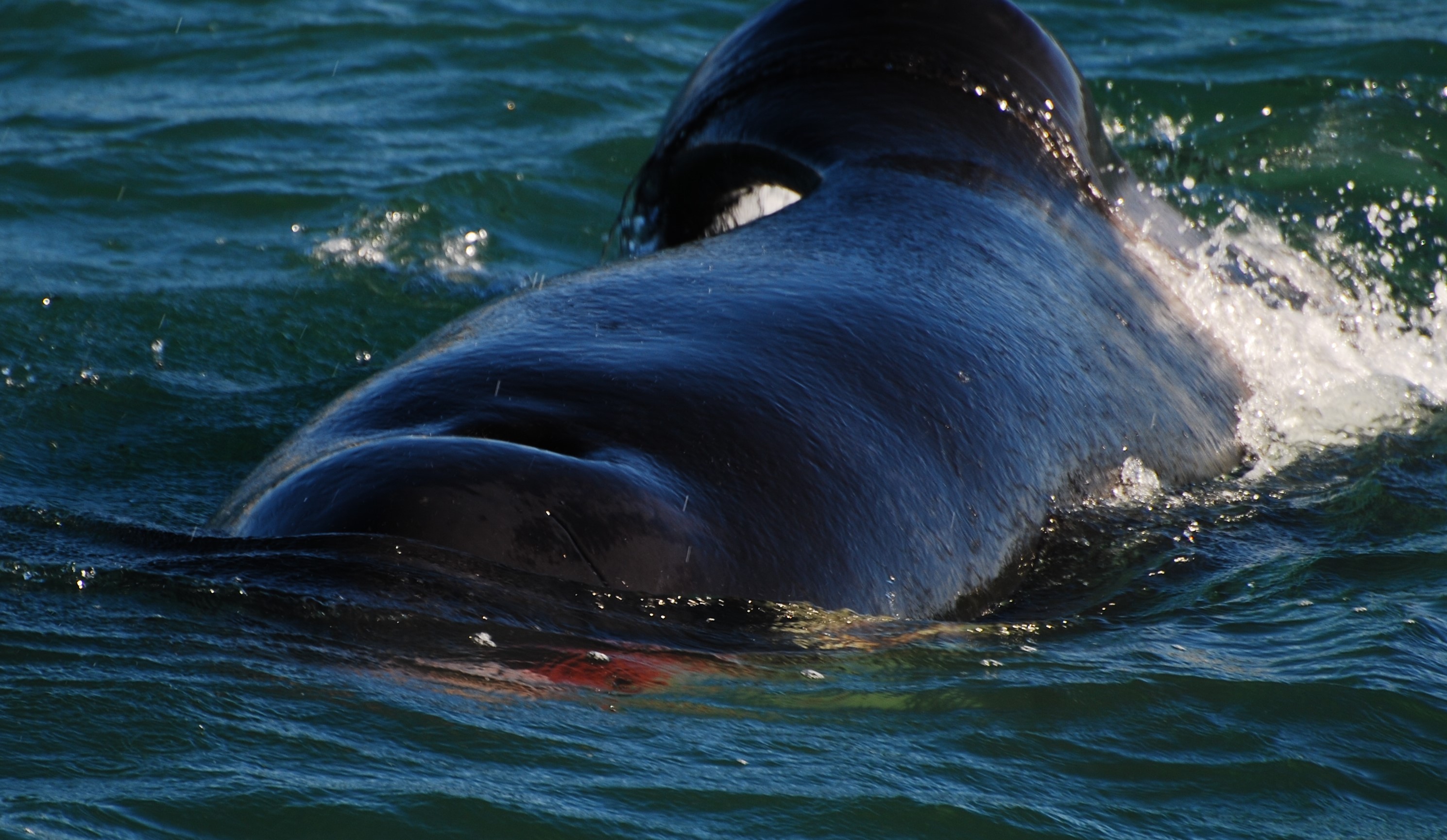
Kelp gulls Larus dominicanus diving to feed on scraps of shark liver tissue, and a large oily surface slick appears.(Photo credit Arianna Di Bari Shark Studies Center Scientific Institute)
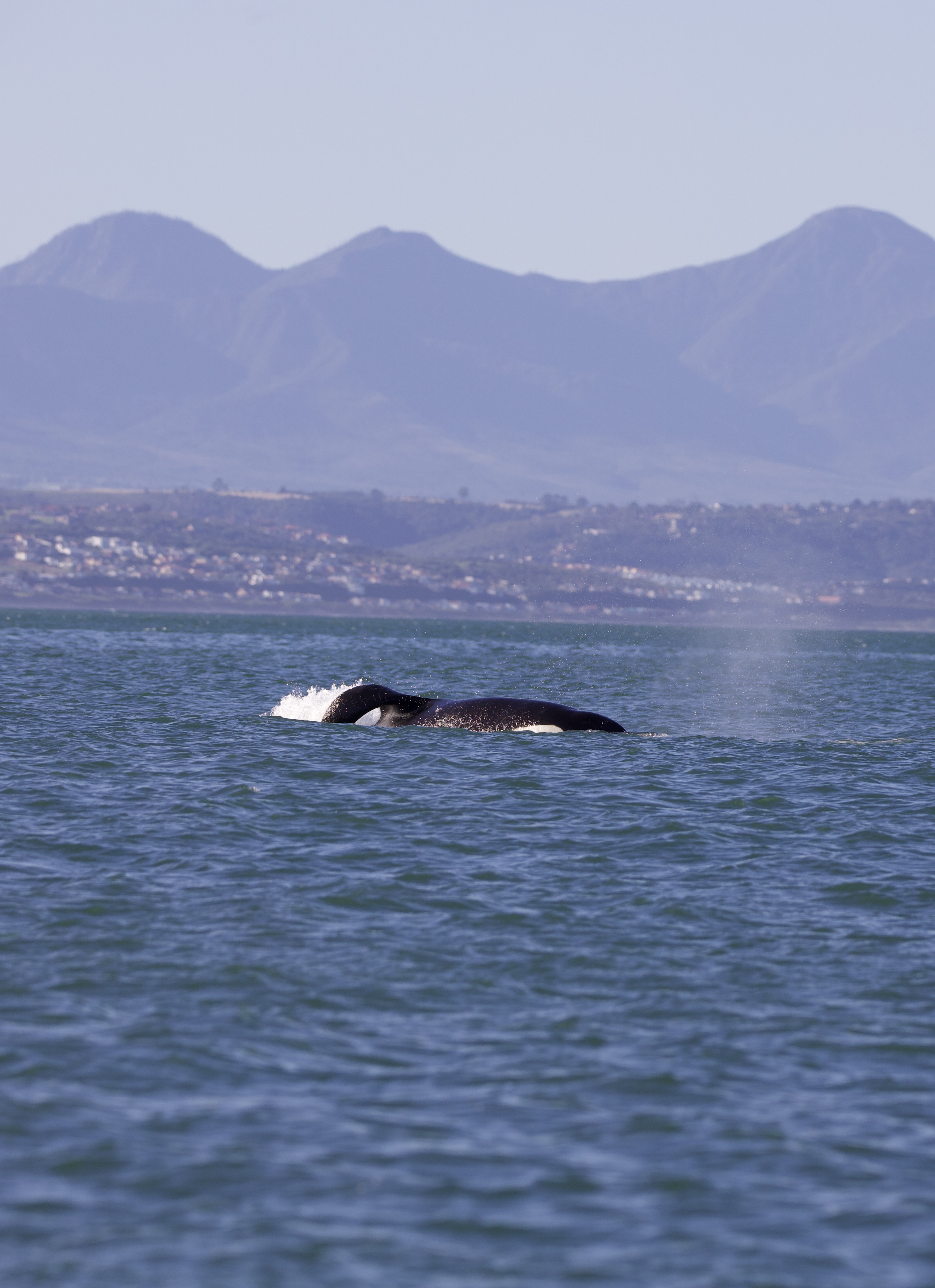
Killer whale ‘Port’ (KWP) patrolling south, and then moving north of Seal Island and remaining more than 100m from the predation event, with no further interaction with killer whale ‘Starboard’ (KWS) (Photo credit Christiaan Stopforth, Drone Fanatics, SA)
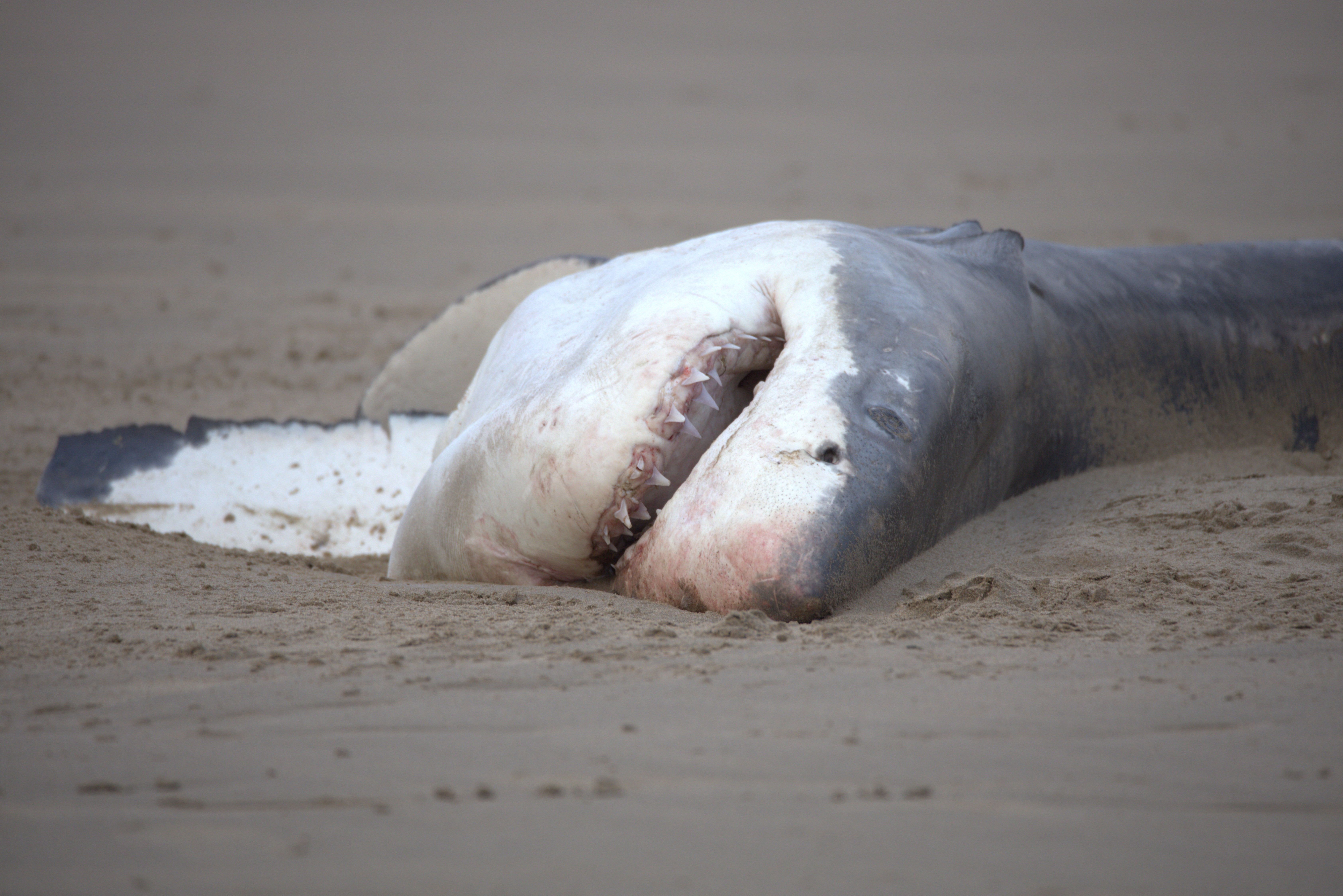
Photo credit Christiaan Stopforth, Drone Fanatics, SA | Sharks Studies Centre – Scientific Institute
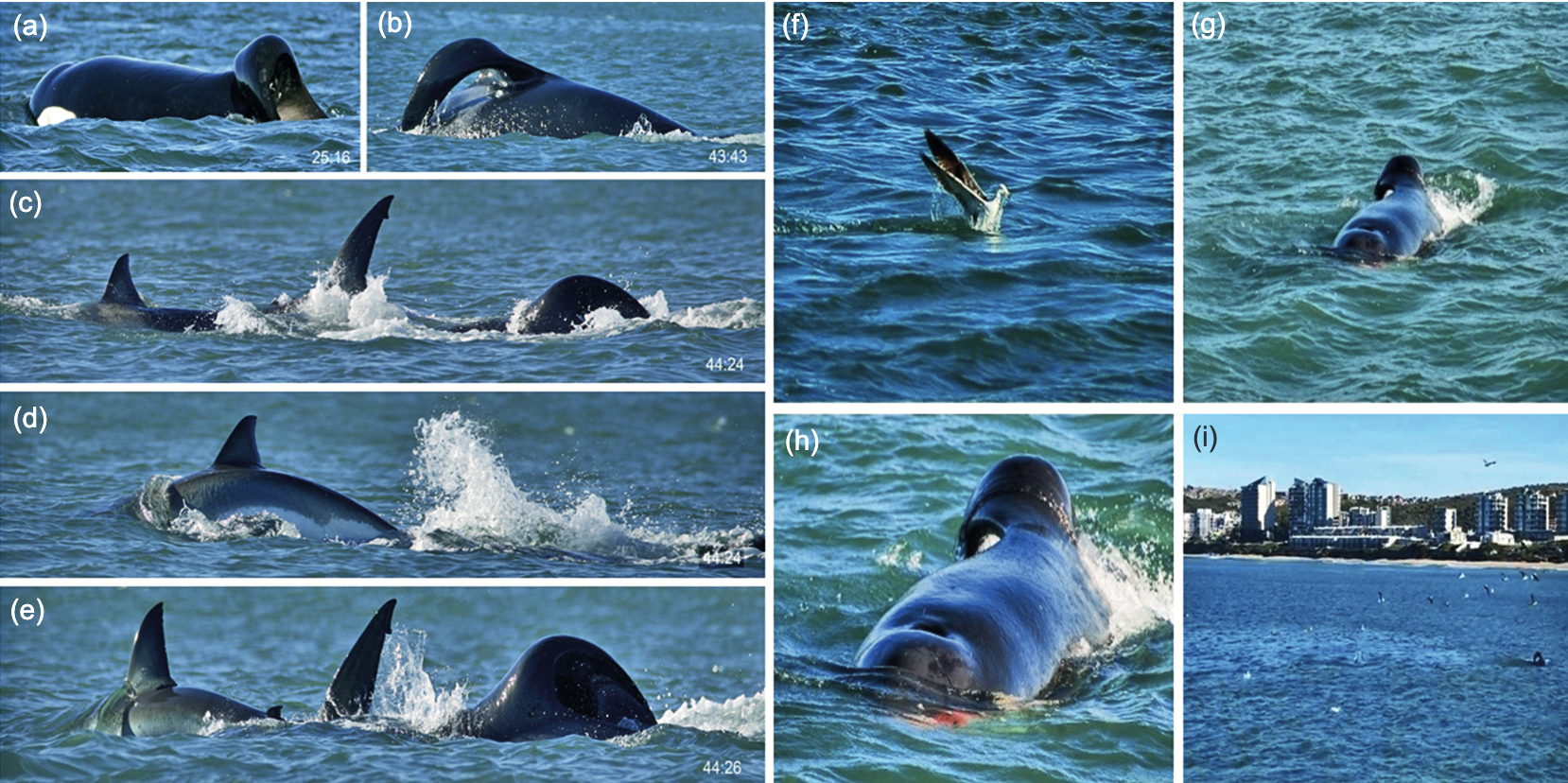
Screengrab from the paper ‘Further insights into killer whales Orcinus orca preying on white sharks Carcharodon carcharias in South Africa’ | Behavioural sequence of killer whales Orcinus orca around Seal Island in Mossel Bay, South Africa. (a) Killer whale ‘Port’ (KWP) patrolling south, and then moving north of Seal Island and remaining >100 m from the predation event, with no further interaction with killer whale ‘Starboard’ (KWS). (b) KWS surfaces near a juvenile white shark Carcharodon carcharias (~2.5 m TL) and then (c) seizes the shark’s left pectoral fin, (d) causing the shark to bow and twist at the surface. (e) After a breath, KWS grasps the partially immobilised shark’s left pectoral fin, pushing the shark forward again; submersion of the shark marks it for potential evisceration. (f, i) Kelp gulls Larus dominicanus diving to feed on scraps of shark liver tissue, and a large oily surface slick appears. (g, h) KWS photographed post-event, holding a piece of the shark’s peach-coloured liver in its mouth with some blood visible, at ~100 m north of the initial site. (Photographs: Christiaan Stopforth and Francesca Romana Romeiro/Sharks Studies Centre – Scientific Institute (SSCSI))
“… this research offers evidence that at least one killer whale, known for shark predation, has the ability to prey on subadult white sharks independently. All other documented predation by killer whales on sharks in the region has involved 2 to 6 individuals,” the researchers said.
“Notably, another adult male killer whale, and constant travelling companion with the first, was observed approximately 100m away and was not involved during the predation.”
Read more in Daily Maverick: Sharks washed up on Cape shore after orca feeding frenzy less of a threat than knock-on ecosystem damage caused by humans – marine biologists
This deadly duo are the famed Port and Starboard, males that have been recorded previously hunting white sharks for their nutrient-rich liver in pairs. Their nautical names are derived from the fact that Port’s dorsal fin tilts left and Starboard’s to the right.
The incident unfolded on 18 June 2023, when Port and Starboard – dubbed KWP and KWS by the researchers – were observed from shore at 12.30pm.
“At 14:12, in response to the sighting, an 8m semi-rigid inflatable vessel named Wildcatt launched from Mossel Bay harbour and first sighted both killer whales south of Seal Island at 14:17. A notable surface slick was apparent, with diving kelp gulls and the distinct smell of shark liver suggesting that a predation event had occurred prior to the boat’s arrival,” the journal article says.
Then at 3.02pm, a juvenile white shark about 2.5m long appeared on the surface, and things quickly got frothy. Like a torpedo with teeth, KWS (Starboard) suddenly “… gripped the left pectoral fin of the shark and thrust forward with the shark several times before eventually eviscerating it.”
“The incapacitation of its prey… followed by consumption of the liver, occurred within less than two minutes.”
A second vessel, a catamaran named “Shark Warrior”, which caters to shark cage divers, recorded video footage of the attack.
“While aerial footage has provided insights into the hunting strategies employed by the killer whales in the region, knowledge gaps persist regarding the duration of a complete predation event and the potential or solitary hunting of white sharks by these particular killer whales, as opposed to cooperative foraging behaviour,” the researchers say.
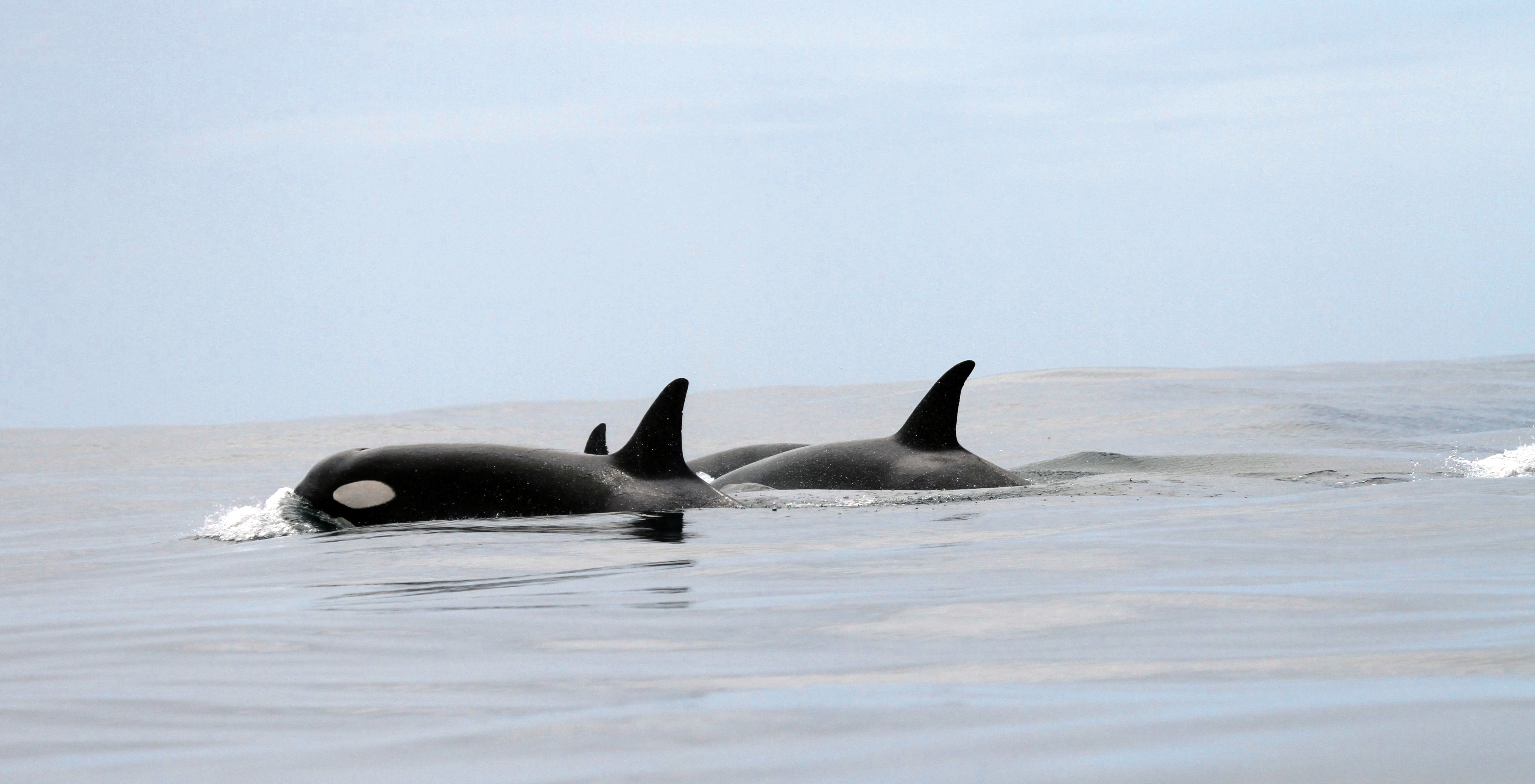
Orcas spotted in the Cape’s West Coast region. (Photo: Supplied)
These knowledge gaps have now been partly filled by this two-minute frenzy.
We now know that when it comes to white sharks, orcas do not need to attack in a group. Starboard apparently wanted the coveted liver all to himself that day and had the capacity to grab the meal himself.
Port and Starboard have for years been contributing to the science of orca behaviour and white sharks.
Towner and other researchers previously linked their presence to the disappearance of white sharks in Gansbaai – a famed location for cage-diving operations – in 2017.
There has been a lot of debate around South Africa’s white shark population and its numbers.
The sudden dearth of white sharks in the previous hot spots of Gansbaai and False Bay and the timing with the appearance of the orcas has been noted by other scientists, who maintain that the population of white sharks in South African waters has remained relatively stable but shifted east.
“… the increased presence of such specialist predators may explain why white sharks have remained absent in False Bay and Gansbaai, but continue to occupy Mossel Bay, Plettenberg Bay and Algoa Bay, where killer whales are less often observed,” researchers wrote in 2023 in the journal Ecological Indicators.
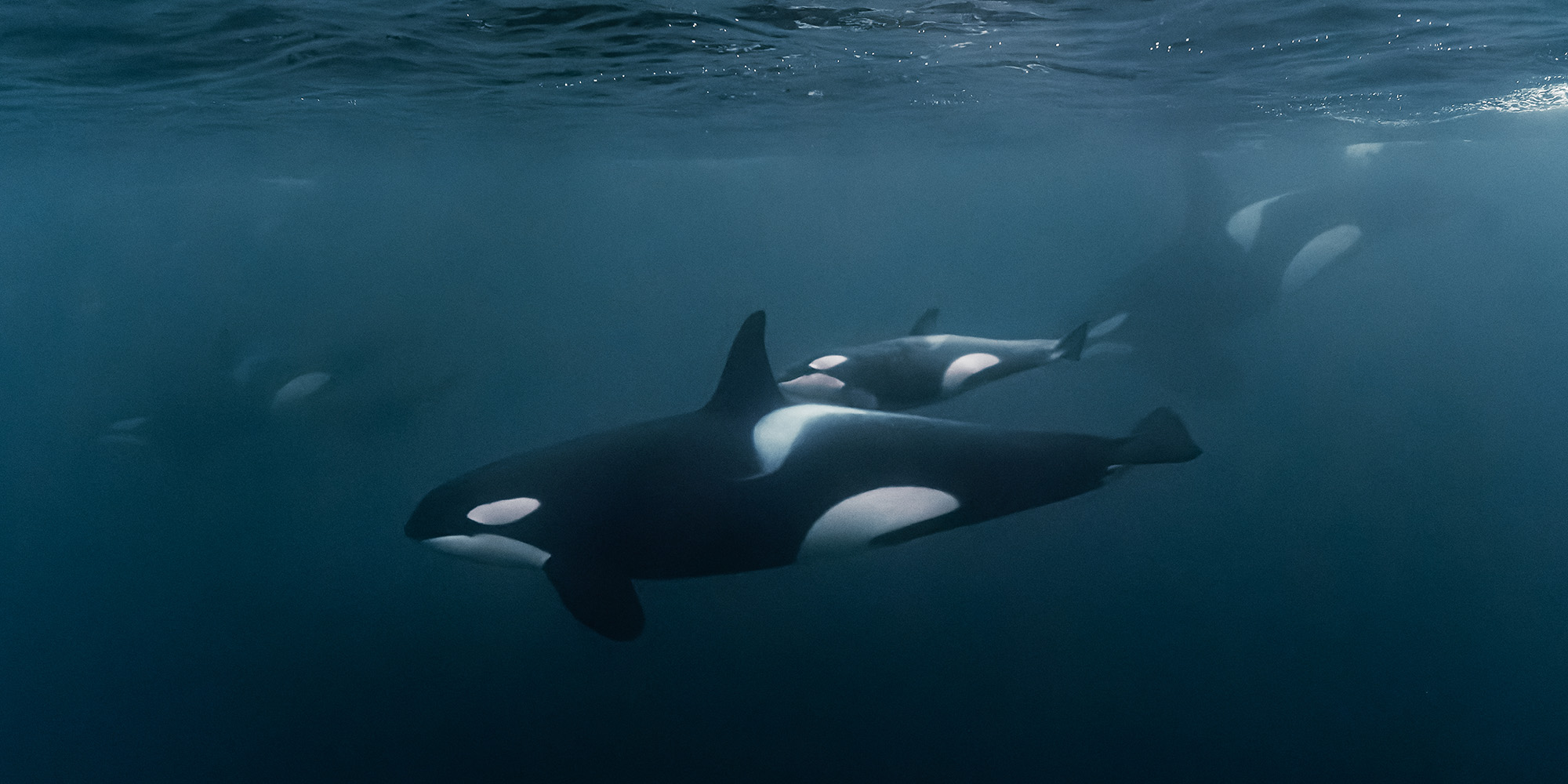
White shark sightings in False Bay dropped off dramatically with the arrival of two orcas. (Photo: iStock)
The article, “Decline or shifting distribution? A first regional trend assessment for white sharks (Carcharodon carcharias) in South Africa”, has triggered a heated debate, with other scientists challenging the contention that white sharks have fled east to avoid orca predation.
Read more in Daily Maverick: Scientists challenge research showing SA’s white shark population is stable
Their concerns stem from the complacency that could set in if numbers are regarded as stable, detracting from the urgent need for measures to conserve South Africa’s white shark population, which plays a key role in the marine ecosystem as well as in the tourism economies of coastal communities.
Lost in the haze of such debates is the fact that there is evidence that white sharks were notably absent or scarce in places such as Gansbaai and False Bay in the past. There is a reason an American team that came to South Africa in 1969 to film white sharks from cages did not even consider going to the Cape, but chose the futile path of following whaling vessels from Durban.
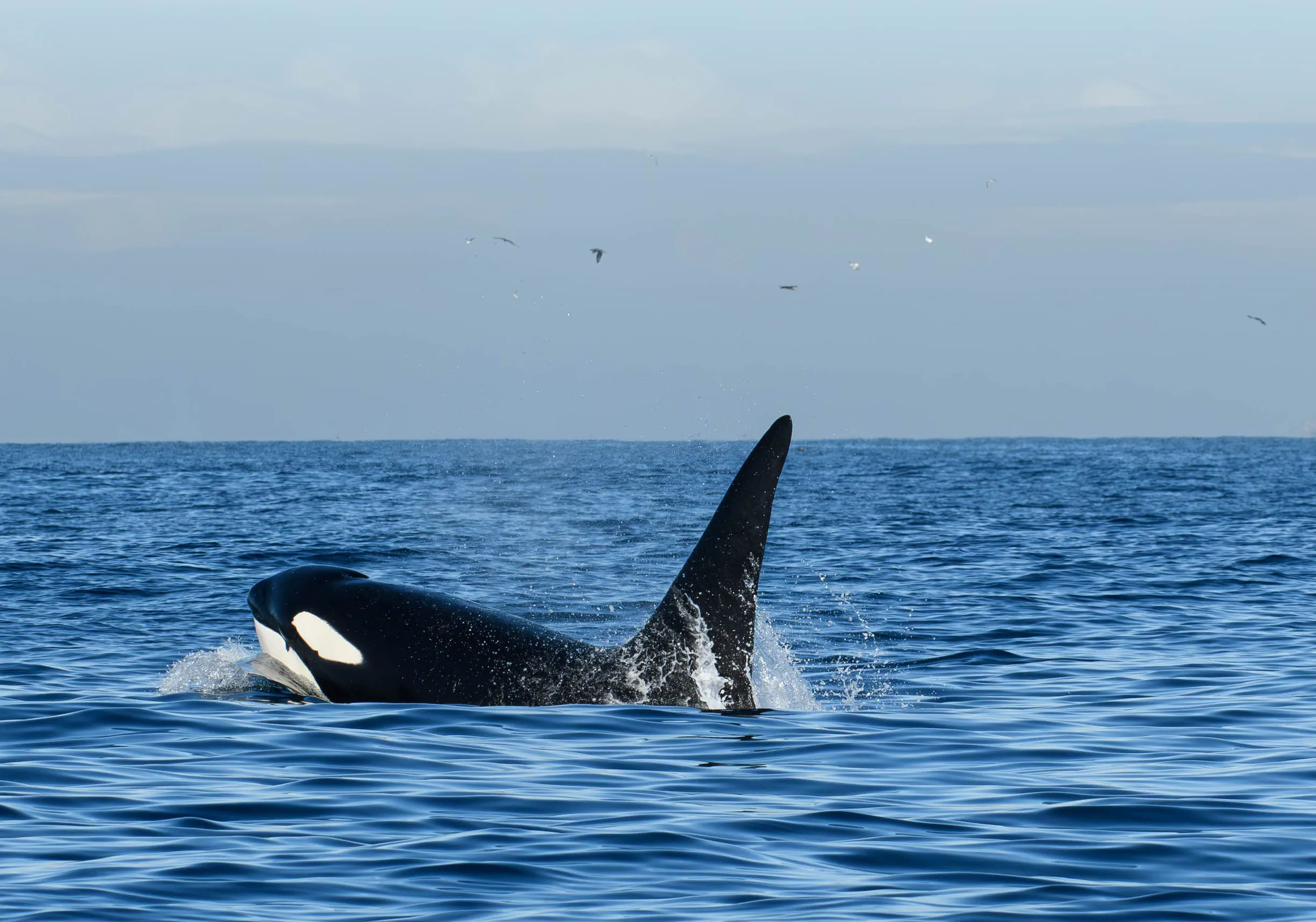
(Photo: Alexander Vogel)
Our main scientific baseline for the species’ numbers in South African waters only extends back about three decades when the cage-diving tourism industry took off. This can lead to the false perception that the sharks have always been abundant in certain locations.
Meanwhile, Starboard has demonstrated that it only takes one orca to make a meal of a white shark. The researchers behind the controversial article from 2023 noted that orcas had started preying on white sharks recently in Mossel Bay, triggering “flight responses from the site”.
You would also get out of Dodge if a predator showed up that could, without assistance, eviscerate you in two minutes. DM




















 Become an Insider
Become an Insider
Comments - Please login in order to comment.